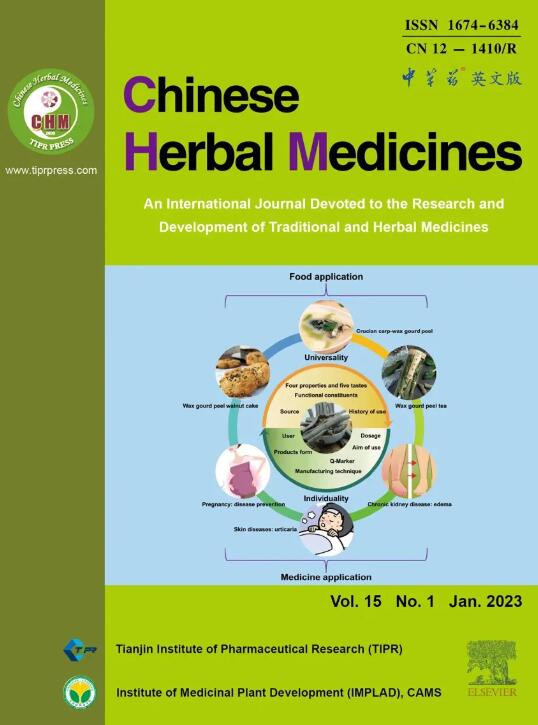Chemical composition and pharmacological activity of seco-prezizaane-type sesquiterpenes
IF 8.9
4区 医学
Q1 CHEMISTRY, MEDICINAL
引用次数: 0
Abstract
The seco-prezizaane-type sesquiterpenes (SPS), as a special class of sesquiterpenes with a highly oxidative five-ring cage structure and seven consecutive chiral centers, are isolated from the genus Illicium, which have a variety of biological activities, including neurotoxicity and neurotrophic effects, etc. This review summarizes the chemical constituents and pharmacological effects of SPS, and discusses the potential trend and scope of future research.
seco-prezizaane-类型倍半萜的化学成分和药理活性
seco-prezizaane-type倍半萜(SPS)作为一类特殊的倍半萜,具有高度氧化的五环笼状结构和七个连续的手性中心,是从茵陈属植物中分离出来的,具有多种生物活性,包括神经毒性和神经营养作用等。本综述概述了 SPS 的化学成分和药理作用,并探讨了未来研究的潜在趋势和范围。
本文章由计算机程序翻译,如有差异,请以英文原文为准。
求助全文
约1分钟内获得全文
求助全文
来源期刊

Chinese Herbal Medicines
CHEMISTRY, MEDICINAL-
CiteScore
4.40
自引率
5.30%
发文量
629
审稿时长
10 weeks
期刊介绍:
Chinese Herbal Medicines is intended to disseminate the latest developments and research progress in traditional and herbal medical sciences to researchers, practitioners, academics and administrators worldwide in the field of traditional and herbal medicines. The journal's international coverage ensures that research and progress from all regions of the world are widely included.
CHM is a core journal of Chinese science and technology. The journal entered into the ESCI database in 2017, and then was included in PMC, Scopus and other important international search systems. In 2019, CHM was successfully selected for the “China Science and Technology Journal Excellence Action Plan” project, which has markedly improved its international influence and industry popularity. CHM obtained the first impact factor of 3.8 in Journal Citation Reports (JCR) in 2023.
 求助内容:
求助内容: 应助结果提醒方式:
应助结果提醒方式:


